Contents
- Indian Regional Navigation Satellite System (IRNSS)
- Bio-Gas
- Ayushman Bharat
- eSanjeevani
- Confederation of Indian Industries (CII)
- Indo-Thai Coordinated Patrol (CORPAT)
- Ethanol Blending Programme
- Ude Desh Ka Aam Naagrik (UDAN)
- Micro-Irrigation Fund (MIF)
INDIAN REGIONAL NAVIGATION SATELLITE SYSTEM (IRNSS)
Focus: GS 3;Science and Technology- developments and their applications and effects in everyday life.
Why in News?
India’s IRNSS is now part of World Wide Radio Navigation System. The Indian Regional Navigation Satellite System (IRNSS) has been accepted as a component of the World Wide Radio Navigation System (WWRNS) for operation in the Indian Ocean Region by the International Maritime Organization (IMO). This will enable merchant vessels to use IRNSS for obtaining position information similar to GPS and GLONASS to assist in the navigation of ships in ocean waters within the area covered by 50°N latitude, 55°E longitude, 5°S latitude and 110°E longitude (approximately up to 1500 km from Indian boundary).
About IRNSS
- The IRNSS is an independent regional navigation satellite system being developed by India.
- It is designed to provide accurate position information service to users in India as well as the region extending up to 1500 km from its boundary, which is its primary service area.
- An Extended Service Area lies between primary service area and area enclosed by the rectangle from Latitude 30 deg South to 50 deg North, Longitude 30 deg East to 130 deg East.
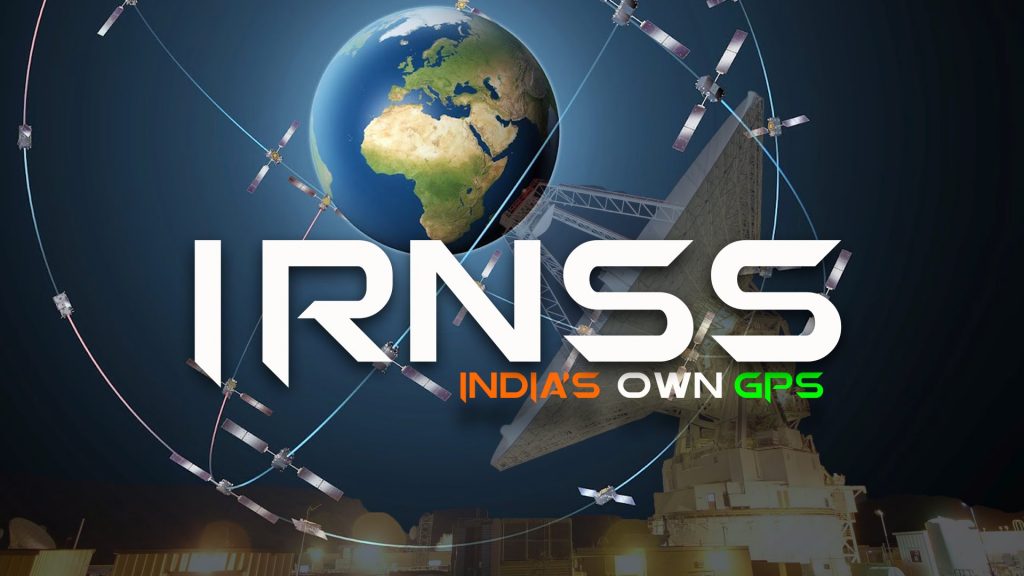
- The IRNSS will provide two types of services, namely, Standard Positioning Service (SPS) which is provided to all the users and Restricted Service (RS), which is an encrypted service provided only to the authorised users.
- The IRNSS System is expected to provide a position accuracy of better than 20 m in the primary service area, the IRNSS simple overview shown in the below attached image.
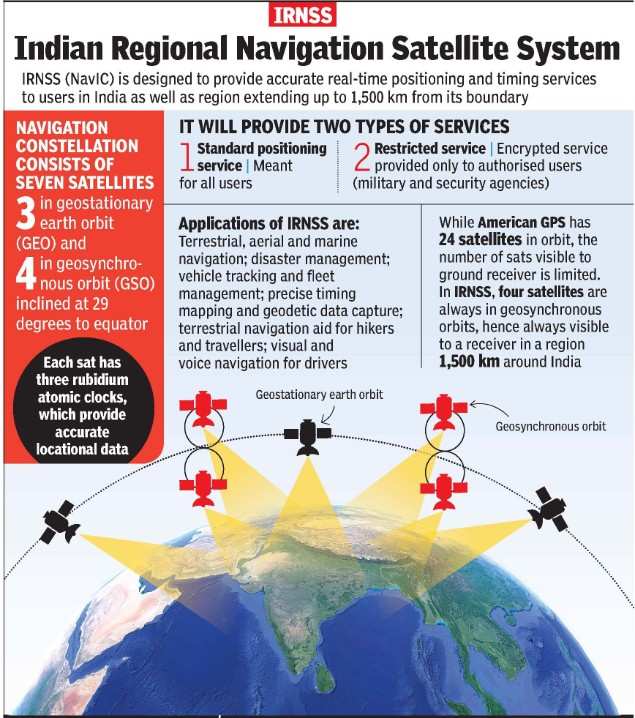
Some applications of IRNSS are as follows:
- Terrestrial, Aerial and Marine Navigation
- Disaster Management
- Vehicle tracking and fleet management
- Integration with mobile phones
- Precise Timing
- Mapping and Geodetic data capture
- Terrestrial navigation aid for hikers and travelers
- Visual and voice navigation for drivers.
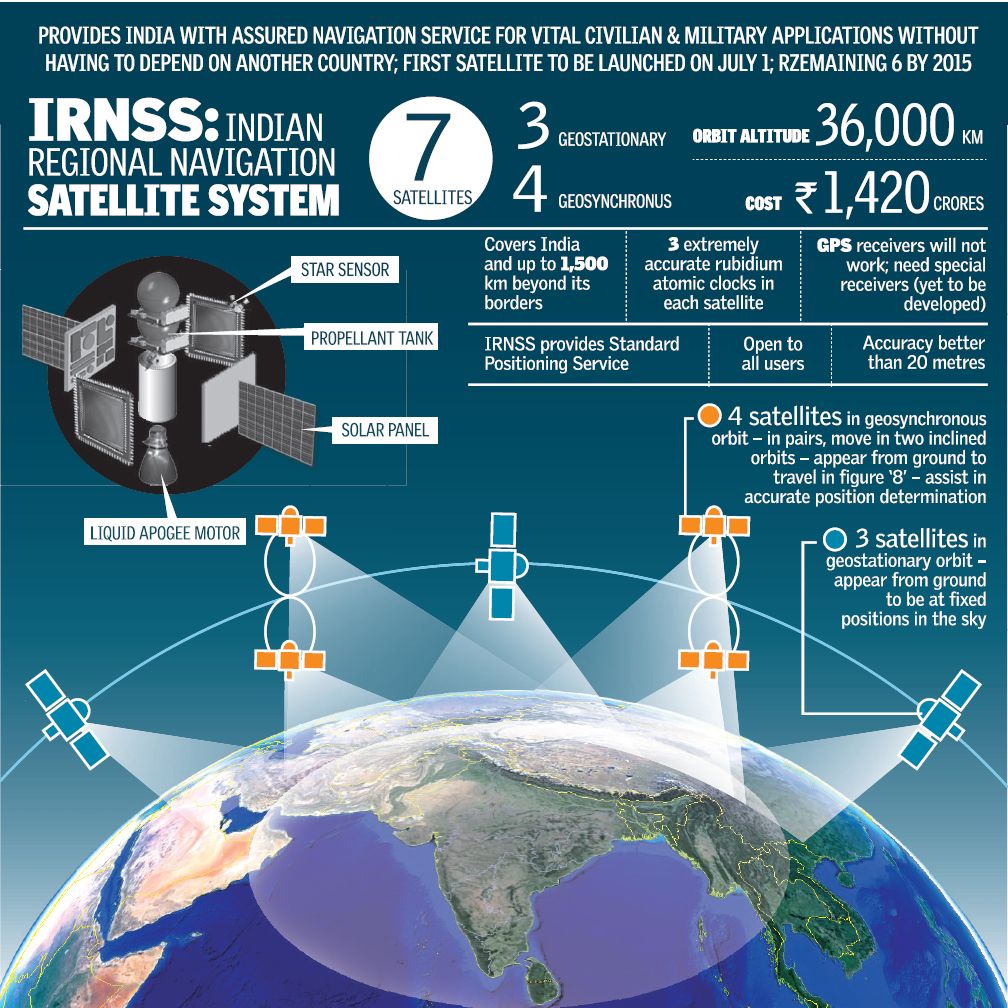
Above attached image of IRNSS detailed overview
Extra Info
World’s Present Famous Global Positioning Satellite as follows
- Global Positioning System (United States)
- Global Navigation Satellite System GLONASS (Russia)
- Galileo (EU)
- BeiDou (China)
- The Quasi-Zenith Satellite System QZSS (Japan)
- The Indian Regional Navigation Satellite System (IRNSS) ―Navigation with Indian Constellation (NAVIC) (India)
About International Maritime Organization (IMO)
- The International Maritime Organization(IMO) is a specialized agency of the United Nations (UN).
- It is a global standard-setting authority with responsibility to improve the safety and security of international shipping and prevention of marine and atmospheric pollution by ships.
- The IMO is not responsible for enforcing its policies.

- There is no enforcement mechanism to implement the policies of the IMO.
- Its main role is to create a regulatory framework for the shipping industry that is fair and effective, universally adopted and universally implemented.
- It is also involved in legal matters, including liability and compensation issues and the facilitation of international maritime traffic.
- It was established by means of a Convention adopted under the auspices of the United Nations in Geneva on 17 March 1948 and met for the first time in January 1959.
- It currently has 174 Member States and 3 associate members.
- The India joined the IMO in 1959.
- The IMO currently lists India as among the 10 states with the ‘largest interest in international seaborne trade’.

BIO-GAS
Focus: GS 3; Infrastructure: Energy, Ports, Roads, Airports, Railways etc
Why in News?
Rs. 2 lakh crore to be invested for setting up 5000 Compressed bio-gas in the country, says Petroleum Minister at MoU signing event for setting up 900 CBG plants
About Bio-Gas
- The Biogas is the mixture of gases produced by the breakdown of organic matter in the absence of oxygen, primarily consisting of methane and carbon dioxide.
- The Biogas can be produced from raw materials such as agricultural waste, manure, municipal waste, plant material, sewage, green waste or food waste.

- The biogas plants can generate biogas from organic substances like cattle dung, night soil wastes, and biomass from the kitchen, garden, farms and other such bio-degradable materials, as shown in the below image.
- The biogas is generated through a process called as anaerobic digestion (AD).
![pib] SATAT Initiative – Civilsdaily](https://www.legacyias.com/wp-content/uploads/2020/11/image-126.png)
Above image shows the process involved in Bio-Gas
- The biogas plant consists of a dome-like structure. Organic material such as discarded food residue, fats, sludge, cow dung etc., are mixed with water and fed to the digester through the inlet as shown in the below figure.

- The digester is a sealed chamber where anaerobic decomposition of organic matter takes place.
- After a few days, the organic matter completely decomposes to generate gases like methane, carbon dioxide, hydrogen and hydrogen sulphide.
- These gases are then drawn through pipes from the storage tank above the digester and distributed through decentralization channels to nearby centres for use.
Advantages of Bio-Gas
- Non – Polluting
- Reduces Landfills
- Cheaper Technology
- Generates Employment
- Renewable source of energy
Dis- Advantages of Bio-Gas
- Not efficient enough on large scale
- Contains Impurities
- Unstable and Hazardous
Extra Info
About Sustainable Alternative Towards Affordable Transportation (SATAT) Initiative
- The Union Petroleum Minister has launched an innovative initiative to set up Compressed Bio-Gas (CBG) production plants and make available CBG in the market for use in automotive fuels.


- This move has the potential to boost availability of more affordable transport fuels, better use of agricultural residue, cattle dung and municipal solid waste, as well as to provide an additional revenue source to farmers.
- The initiative holds great promise for efficient municipal solid waste management and in tackling the problem of polluted urban air due to farm stubble-burning and carbon emissions.
- Use of CBG will also help bring down dependency on crude oil imports.
Benefits of the initiative
- There are multiple benefits from converting agricultural residue, cattle dung and municipal solid waste into CBG on a commercial scale
- Responsible waste management, reduction in carbon emissions and pollution
- Additional revenue source for farmers
- Boost to entrepreneurship, rural economy and employment
- Support to national commitments in achieving climate change goals
- Reduction in import of natural gas and crude oil
- Buffer against crude oil/gas price fluctuations
AYUSHMAN BHARAT
Focus: GS 2; Issues relating to development and management of Social Sector/Services relating to Health, Education, Human Resources.
Why in News?
India records a landmark milestone with operationalization of more than 50,000 Ayushman Bharat Health & Wellness Centres (HWCs).

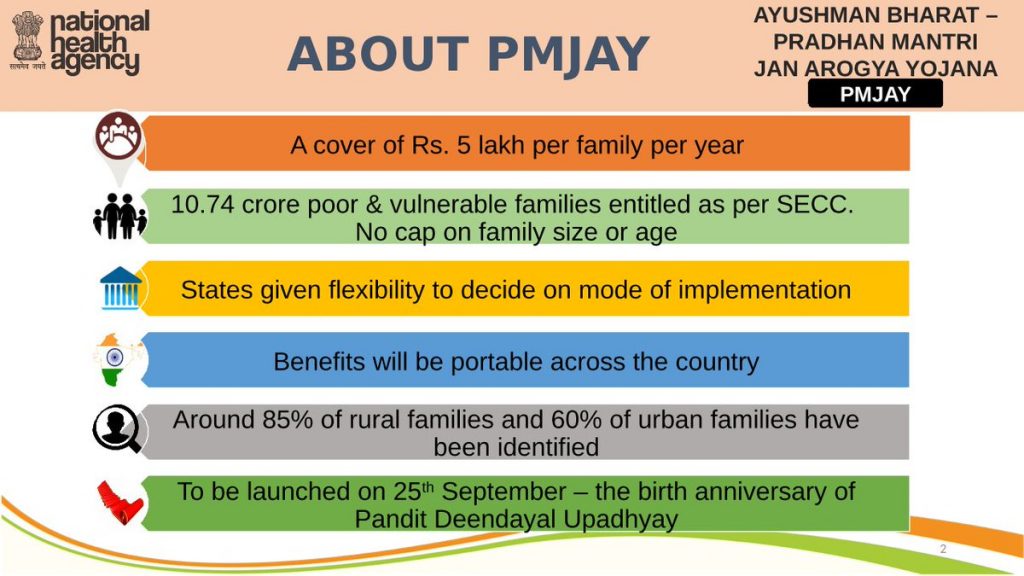
Please click on this link and Refer for detailed explanation about Ayushman Bharat
E-SANJEEVANI
Focus: GS 2; Issues relating to development and management of Social Sector/Services relating to Health, Education, Human Resources.
Why in News?
Health Ministry’s eSanjeevani completes 8 Lakh consultations

Please click on this link and Refer for detailed explanation about E- Sanjeevani
CONFEDERATION OF INDIAN INDUSTRIES (CII)
Focus: GS 2; Development processes and the development industry —the role of NGOs, SHGs, various groups and associations, donors, charities, institutional and other stakeholders.
Why in News?
Dr. Harsh Vardhan addresses National Council of Confederation of Indian Industries (CII)
About Confederation of Indian Industries (CII)
- The CII is a non-government, not-for-profit, industry-led and industry-managed organization.
- It founded in 1895, it has over 9,000 members, from the private as well as public sectors, including SMEs and MNCs, and an indirect membership of over 300,000 enterprises from around 265 national and regional sectoral industry bodies.

- Its headquarters is in New Delhi.
- It works to create and sustain an environment conducive to the development of India, partnering industry, Government and civil society, through advisory and consultative processes.
INDO – THAI COORDINATED PATROL (CORPAT)
Focus: GS 2; Development processes and the development industry —the role of NGOs, SHGs, various groups and associations, donors, charities, institutional and other stakeholders.
Why in News?
The 30th edition of India-Thailand Coordinated Patrol (Indo-Thai CORPAT) between the Indian Navy and the Royal Thai Navy is being conducted from 18 – 20 November 2020. Indian Naval Ship (INS) Karmuk, an indigenously built Missile Corvette and His Majesty’s Thailand Ship (HTMS) Kraburi, a Chao Phraya Class Frigate along with Dornier Maritime Patrol Aircraft from both the navies are participating in the CORPAT.
About Indo-Thai Coordinated Patrol (CORPAT)
- The CORPAT has been initiated with the aim of keeping this vital part of the Indian Ocean safe and secure for commercial shipping and international trade.
- As part of Government of India’s vision of SAGAR (Security And Growth for All in the Region), the Indian Navy has been involved in assisting countries in the Indian Ocean Region with EEZ Surveillance, Humanitarian Assistance and Disaster Relief (HADR), and other capacity building and capability-enhancement activities, on their request.

- India and Thailand have especially enjoyed a close and friendly relationship covering a wide spectrum of activities and interactions, which have strengthened over the years.
- To reinforce maritime links, the two navies have been carrying out CORPAT along their International Maritime Boundary Line twice a year since 2005, with the aim of keeping this vital part of the Indian Ocean safe and secure for commercial shipping and international trade.
- The CORPAT builds up the understanding and interoperability between navies and facilitates institution of measures to prevent and suppress Illegal Unreported Unregulated (IUU) fishing, drug trafficking, maritime terrorism, armed robbery and piracy.
- It further enhances the operational synergy by exchange of information for prevention of smuggling, illegal immigration and for conduct of SAR operations at sea.
- The 30th Indo-Thai CORPAT will contribute towards Indian Navy’s efforts to consolidate inter-operability and forge strong bonds of friendship with Royal Thai Navy.
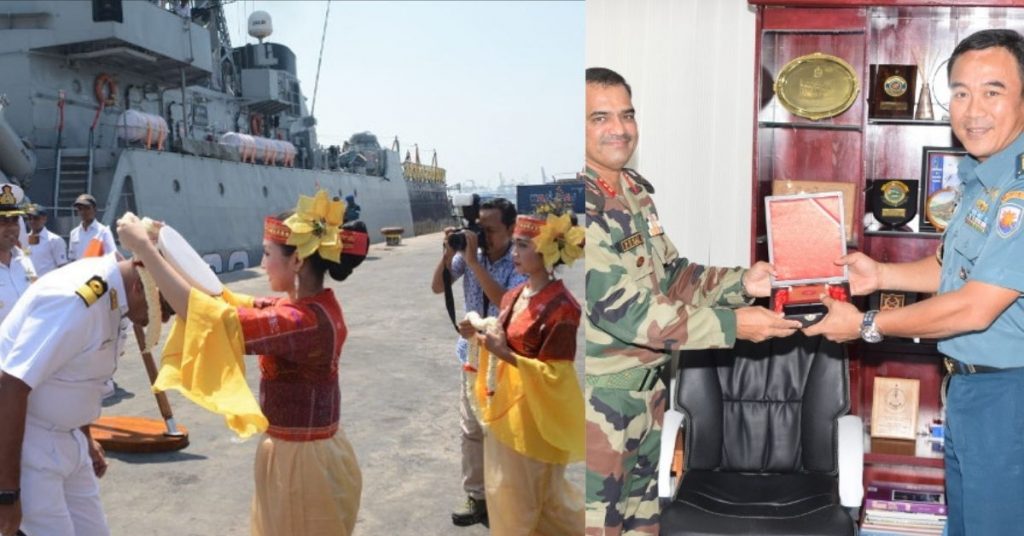
ETHANOL BLENDING PROGRAMME
Focus: GS 3; Infrastructure: Energy, Ports, Roads, Airports, Railways etc
Why in News?
Diversion of excess sugar to ethanol to enhance income of sugarcane farmers and to achieve ethanol blending target.

Please click on this link and Refer for detailed explanation about Ethanol Blending Programme
UDE DESH KA AAM NAAGRIK (UDAN)
Focus: GS 2 ;Welfare schemes for vulnerable sections of the population by the Centre and States and the performance of these schemes; mechanisms, laws, institutions and Bodies constituted for the protection and betterment of these vulnerable sections.
Why in News?
Hyderabad – Nashik SpiceJet Flight Flagged off under UDAN.

Please click on this link and Refer for detailed explanation about UDAN Scheme
MICRO- IRRIGATION FUND (MIF)
Focus: GS 3 ;Major crops-cropping patterns in various parts of the country, – different types of irrigation and irrigation systems storage, transport and marketing of agricultural produce and issues and related constraints; e-technology in the aid of farmers.
Why in News?
Release of Interest Sub-vented Loan from Micro-Irrigation Fund (MIF)
About Micro – Irrigation Fund
- The Micro Irrigation Fund with a corpus of Rs. 5000 crore created with NABARD was operationalised in 2019-20.

- The objective of the Fund is to facilitate the States in availing an interest subvented loan for expanding coverage of Micro Irrigation by taking up special and innovative projects and also for incentivising micro irrigation beyond the provisions available under PMKSY-Per Drop More Crop to encourage farmers to install micro irrigation systems.



